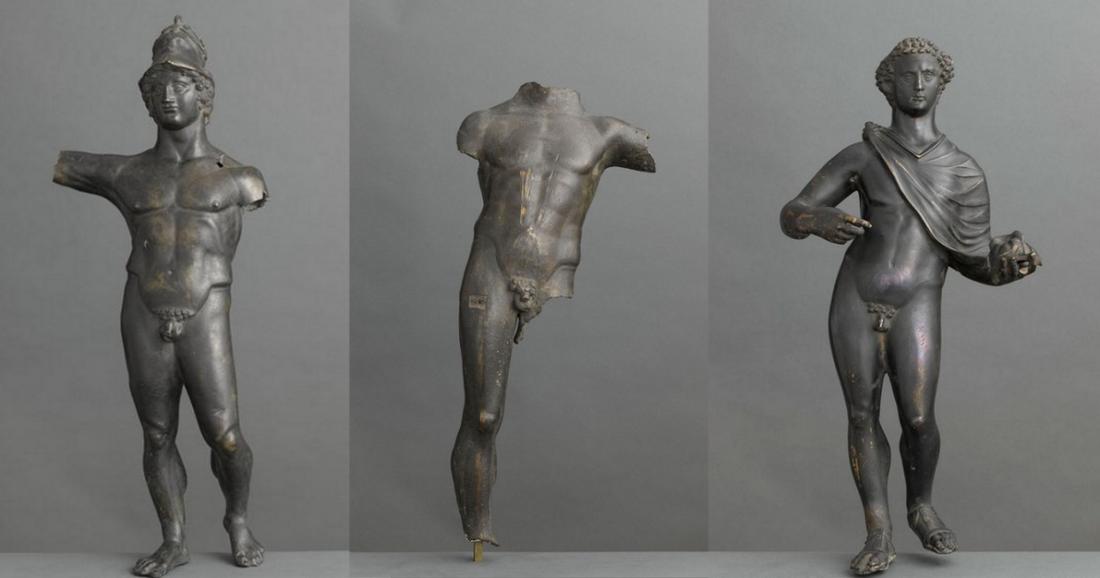The Palais des Beaux-Arts in Lille already had a significant collection of Gallo-Roman objects. In 1881, it purchased a series of bronze statuettes from the town of Bavay. But none could match in size and quality those found in the Lys.
The three bronzes, each about 50 cm tall, represent three Roman deities: Mars, recognisable by his helmet, Mercury carrying a purse, and the last one possibly Jupiter, through comparison with other works depicting this god. Their silhouettes are inspired by Greek and Roman statues, although they are less slender. They’re more similar to the bronzes found in Bavay and the surrounding region. Their resemblance suggests they were produced by a local workshop that supplied nearby towns with statuettes.
While the small models were primarily ex-votos, gifts offered to the deities in thanks, the larger examples must have been statues of worship for sanctuaries. They are also much rarer. The three Lille bonzes are a precious example of this. The location where they were discovered confirms this hypothesis. The statuettes actually come from Thiennes, the man who discovered them having kept their place of origin secret. This town was located on an important trade route in the Roman era linking Cassel to Bavay, two of the great capitals of the time, and must have contained one or more places of worship.
Upon arrival at the museum, the three bronzes were placed in the middle of the archaeology gallery in recognition of their importance.
Inv. Ant 2751, Ant 2752, Ant 2753

The Palais des Beaux-Arts in Lille already had a significant collection of Gallo-Roman objects. In 1881, it purchased a series of bronze statuettes from the town of Bavay. But none could match in size and quality those found in the Lys.
The three bronzes, each about 50 cm tall, represent three Roman deities: Mars, recognisable by his helmet, Mercury carrying a purse, and the last one possibly Jupiter, through comparison with other works depicting this god. Their silhouettes are inspired by Greek and Roman statues, although they are less slender. They’re more similar to the bronzes found in Bavay and the surrounding region. Their resemblance suggests they were produced by a local workshop that supplied nearby towns with statuettes.
While the small models were primarily ex-votos, gifts offered to the deities in thanks, the larger examples must have been statues of worship for sanctuaries. They are also much rarer. The three Lille bonzes are a precious example of this. The location where they were discovered confirms this hypothesis. The statuettes actually come from Thiennes, the man who discovered them having kept their place of origin secret. This town was located on an important trade route in the Roman era linking Cassel to Bavay, two of the great capitals of the time, and must have contained one or more places of worship.
Upon arrival at the museum, the three bronzes were placed in the middle of the archaeology gallery in recognition of their importance.
Inv. Ant 2751, Ant 2752, Ant 2753